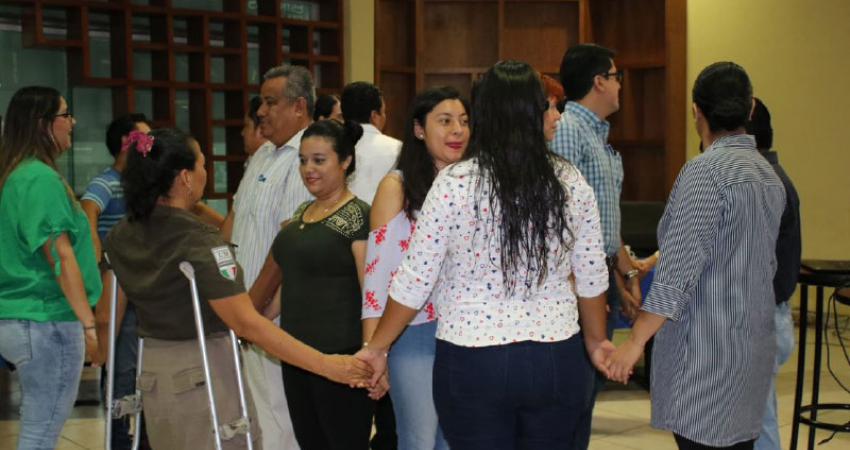Over 100 local actors launch communication for development campaigns focused on migration in Mesoamerica

Creativity and participatory work are the primary focuses in the communication for development (C4D) processes being implemented in Tapachula, México, Salcajá, Guatemala, San Pedro Sula, Honduras, and Ahuachapán, El Salvador as part of the joint efforts of IOM, local governments, and various actors to improve communities’ access to information about safe migration and local alternatives to irregular migration.
Over 100 actors participated in the workshops held in May, including central and local governments, institutions, civil society, and community leaders. The objective of the activities was to develop creative concepts and key messages for campaigns that will be implemented in communities.
“We are very glad that we as young people are being taken into account in this community campaign, since it is a campaign directed towards young people, people with a desire to find new opportunities and develop all our abilities,” stated Kenny Sandoval, a volunteer with the Youth Institute in El Salvador.
For her part, Ruby Siquiná, Director of the Municipal Directorate of Women of Salcajá, Guatemala, said she feels very satisfied with the results of the workshop. “We achieved positive results, we worked together and reached an agreement between all the participants.”
“I think the workshop is a great initiative because it takes the opinions of different social actors into consideration,” added Sofía Chong, of RET International in Mexico. “Additionally, the qualitative and quantitative study supporting the campaign enables us to understand the target audience and design an appropriate message.”
C4D is a methodology that seeks to generate participatory processes through which local actors can find solutions to promote behavioral changes that bring about social development. IOM uses C4D processes to promote regular, orderly, and safe migration.
This activity was made possible by financing from the Bureau of Population, Refugees, and Migration (PRM) of the Department of State of the United States, within the framework of the Western Hemisphere Regional Migration Program (Mesoamerica - The Caribbean).